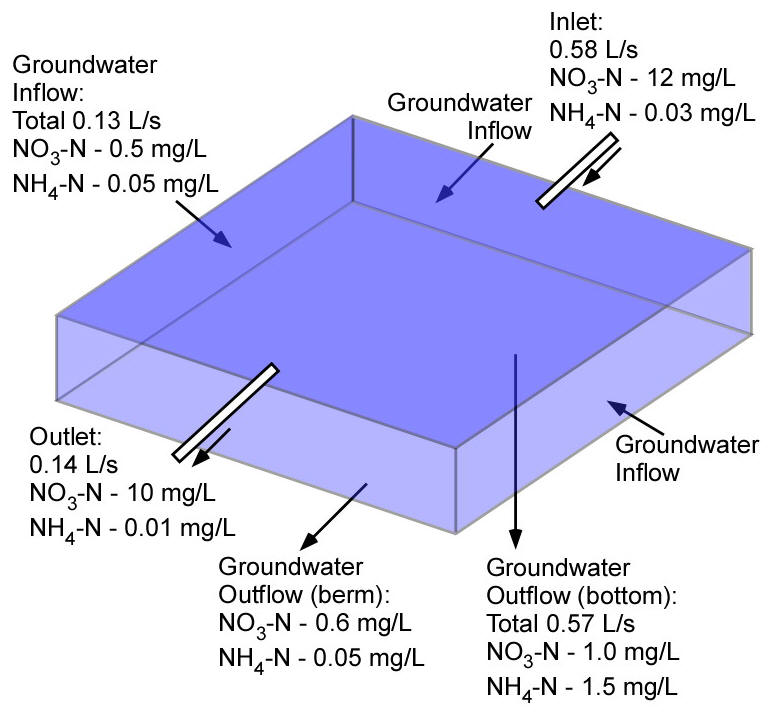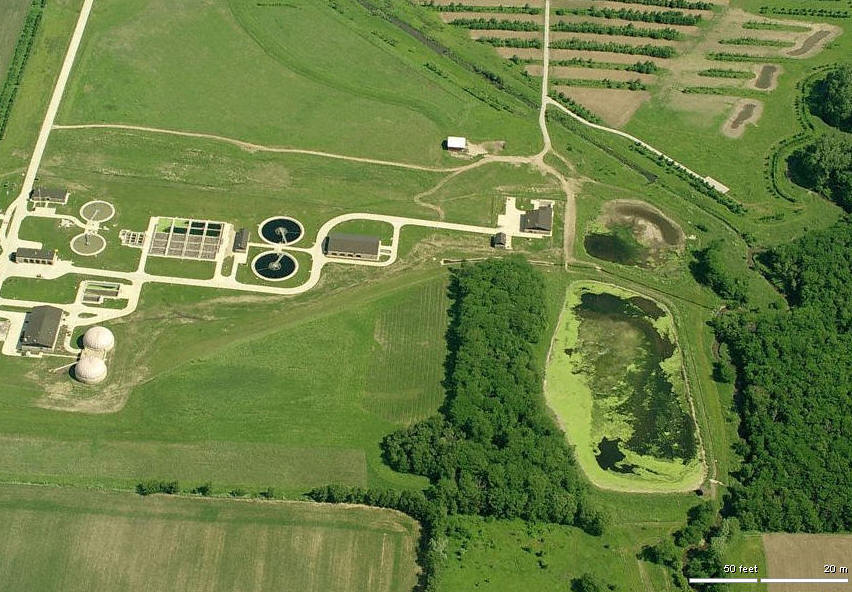Constructed Wetlands for Nitrogen and Phosphorus Removal
Research Info
Past Students : Emma Rude, Eileen Maxwell
Advisors: Eric Peterson, Catherine O'Reilly, and Bill Perry, School of Biological Sciences
Surface water and groundwater in the U.S. and around the world have been negatively impacted by increased nutrient loads due to the application of agricultural fertilizers and discharge of treated waste water. One strategy for reducing the nutrient loads is to pass agricultural drainage and treated waste water through constructed wetlands prior to discharge into streams or rivers. Most research in this field focuses on removal processes occurring in the wetlands. Our focus is to characterize the role of groundwater seeping in to and out of the wetlands.
We are currently collaborating on research with The Nature Conservancy (TNC) at their Franklin Demonstration Farm in Lexington, IL. Among the numerous conservation practices being explored at the Demo Farm are a series of constructed wetlands receiving subsurface tile drainage. Tile drainage usually discharges directly into the nearest stream, however, biogeochemical processes occurring in constructed wetlands can remove the nutrients in tile water. Specific goals of this project are to quantify groundwater interactions with each wetland complex and to quantify nitrogen cycling processes (denitrification, nitrification, and uptake) in each wetland. Water and nitrogen mass balances are being constructed through the use of injected tracer tests and measuring the natural nitrogen isotopic composition dissolved and solid nitrogen species.
In another project, we are looking at the removal of nitrogen and phosphorus from treated waste water seeping out of a constructed wetland operated by the Bloomington Normal Water Reclamation District. Preliminary data indicate that >90% of the nitrogen and 100% of the phosphorus is removed in the subsurface. A 3-dimensional array of monitoring wells has been installed around and beneath the wetlands, and groundwater flow model will be used quantify the flux of water seeping out of the wetlands. In addition to hydraulic head, the model will be calibrated using the conservative tracer chloride. Chloride concentrations in the waste water are an order of magnitude greater than the natural site groundwater, and this difference can be used to determine mixing ratios of groundwater and waste water as well as travel times in and hydraulic conductivity of the aquifer underlying the wetland.



Recent presentations and publications include:
- Peterson, E. W., and Hanna, L. A.*, 2016, Estrogen reduction in a coupled wetland and ground water flow-through system: Environmental Earth Science, v. 75, no. 5, p. 1-8, doi:10.1007/s12665-016-5259-4.
- Ackerman, J.*, Peterson, E., Van der Hoven, S., Perry, W., 2015, Quantifying nutrient removal from groundwater seepage out of a constructed wetlands receiving treated wastewater effluent: Environmental Earth Science, v. 74, no. 2, p. 1633-1645, doi10.1007/s12665-015-4167-3.
- Peterson, E.W., and Lanning, A.**, 2009, Effectiveness of pilot-scale wetland designs in removing estrogenic compounds from municipal wastewater plant effluent : Environmental Geosciences , Vol. 16, Issue 2, pp. 61-69